 USA – 6 January
USA – 6 January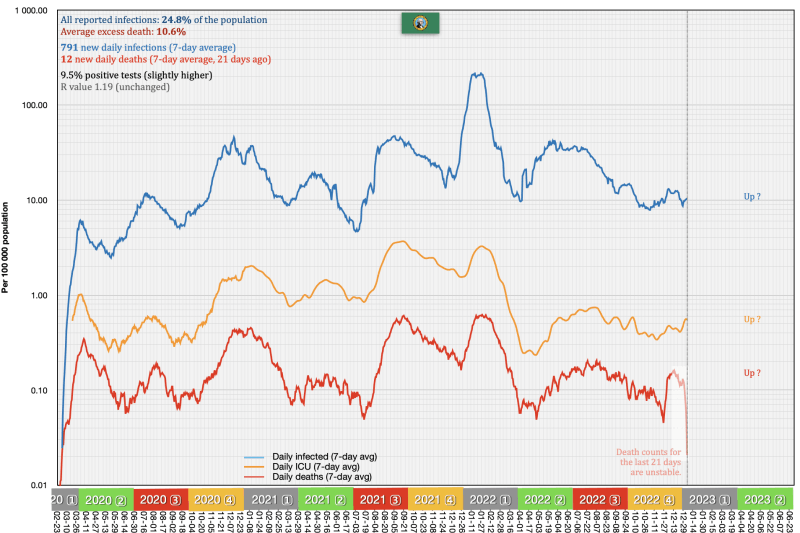 Washington State – 3 January
Washington State – 3 January France – 6 January
France – 6 January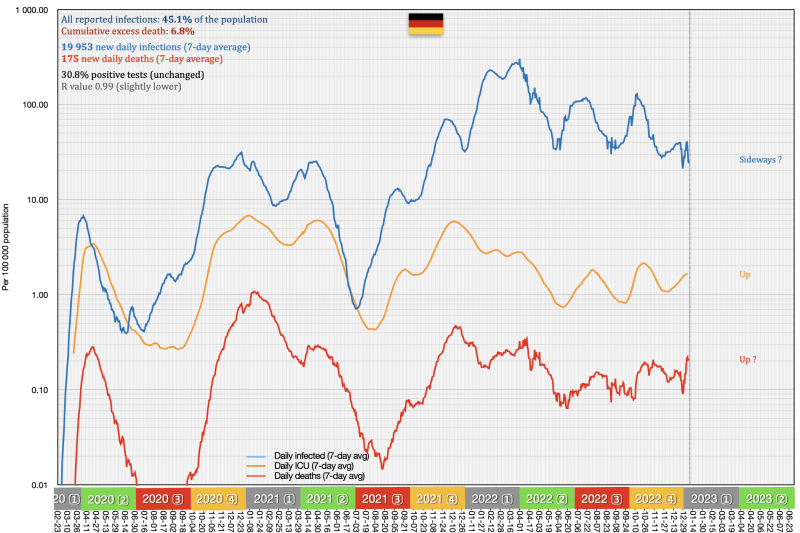 Germany – 6 January
Germany – 6 January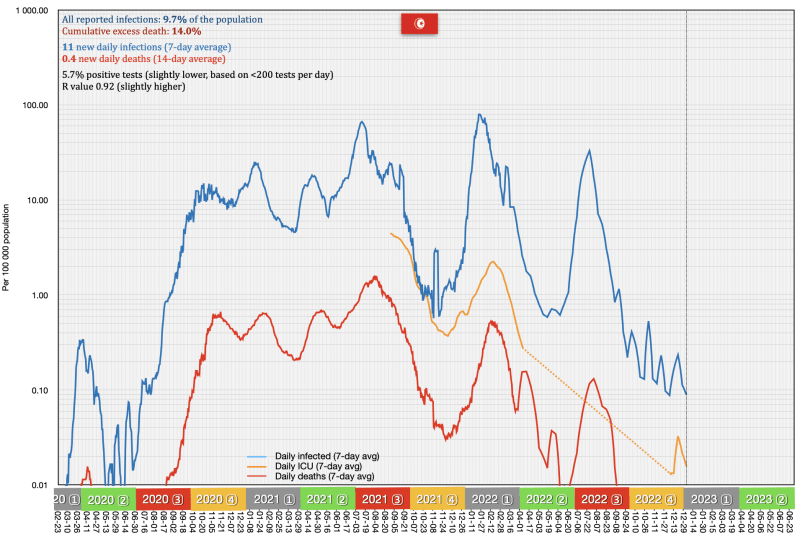 Tunisia – 2 January
Tunisia – 2 January Vaccinations (Cumulative) – 6 January
Vaccinations (Cumulative) – 6 January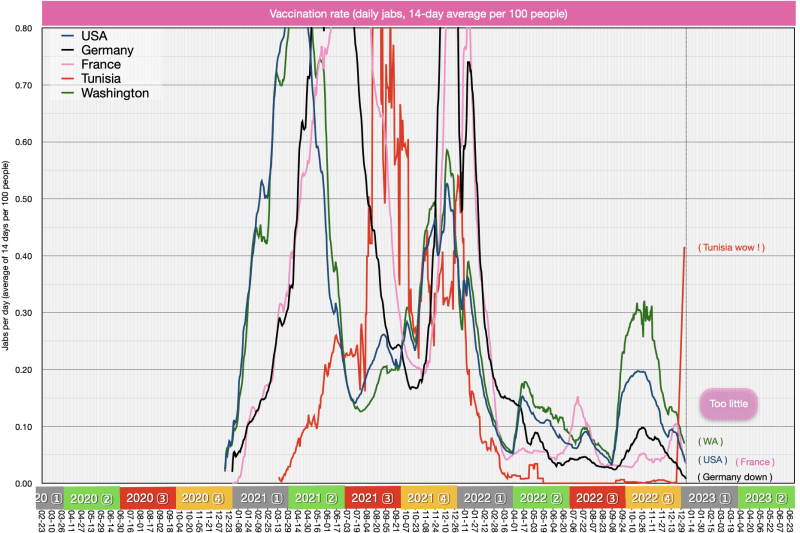 Vaccinations (jabs) per day – 6 January
Vaccinations (jabs) per day – 6 January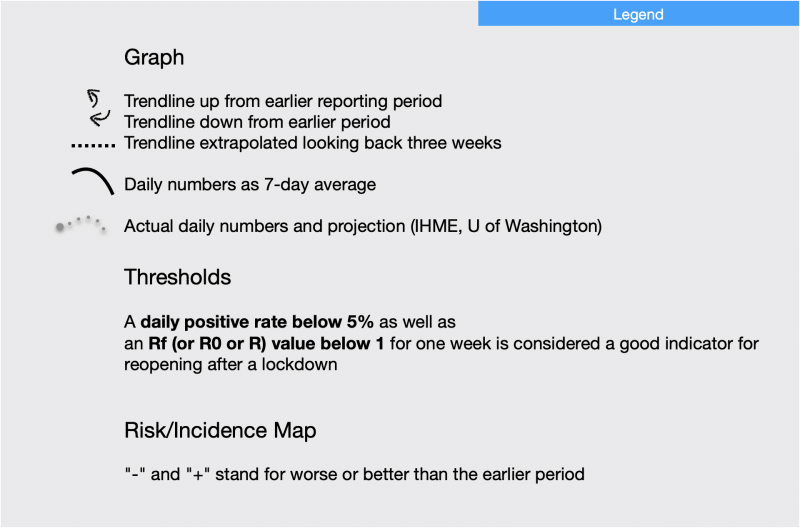 Legend
LegendThe New Year Brings Nothing New
But new, more proliferative Omicron variants could bring more hospitalisations and deaths
Germany's incidence oscillates at a too-high level but with most people doing home-testing, if at all, this indicator loses its relevance. This is also reflected in a test-positive rate way above the 5% that is considered good by the WHO.
The only numbers that remain relevant are thus hospitalisations and deaths, which are both on the upswing, but probably not for very long. German mortality is high compared to other European countries. Vigilance is thus the word of the month and abolishment of the mask mandate in public transportation has been wisely put off for now.
Further aggravating the situation is that vaccination is at an all-time low at a time when more bivalent boosters could certainly save lives.
France's number are declining again, and they will probably oscillate at around the current level. People are not getting vaccinated enough and the rate is close to an all-time low.
In the USA, with RSV and influenza having ebbed off a little, Covid-19 is starting to take a front-row seat again (CNN). Wastewater levels of SARS-CoV-2 are increasing and so are hospitalisations and deaths. All numbers are probably oscillating at levels that are too high for no concern but low enough to not harm the health care systems.
The new variant, XBB.1.5, has gone form 4% prevalence to 40% in just one month (PDF), particularly in the Northeast. There is no indication that it is more harmful than previous variants. It needs to be seen if it spreads further in the US and if it can gain foothold in Europe (France and Germany: currently less than 2%).
Further aggravating the situation is a vaccination rate close to an all-time low.
Washington State's numbers seem to oscillate within the pretty wide corridor that is no longer harmful to the health system and currently all numbers are pointing up. Vaccination uptake is better than in the rest of the US but close to an all-time low anyway.
Tunisia's graphs show what it should look like when Covid-19 is no longer a thread. However, Tunisian numbers are, in most likelihood, underreported and Tunisian scientists warn of a new wave (TAP).
Bivalent booster vaccinations have now become available and are being administered but overall, the number of jabs remains far below that of Europe.
Goodbye Projections. The Institute of Health Metrics and Evaluation (IHME) has halted projections indefinitely and my graphs were adjusted accordingly. While projections have been eerily accurate during 2020 and 2021, they have been mostly wrong during 2022, which was caused by inadequate data.
Once the WHO declares the end of the pandemic, Covid-19 will have become endemic in most countries. Local health authorities will then rank SARS-CoV-2 infections with other infections and data reporting will be reduced from the now daily and weekly to monthly or even less frequently (as seen in Britain already). When that time comes, I will cease to update this blog.
In the countries in this blog (and most others in Europe and North America), the bivalent booster vaccination is not taken up as well as needed, which, combined with a masking rate of under 10%, is still causing more Covid-19 deaths than necessary.
Many people argue, perhaps cynically so, that most of these people would have died anyway within the next weeks of months (or years?). After all, this is similar to collateral damage caused by other behaviour, such as driving or emitting CO2. It might even be a human trait.
Thus, when it comes to masking and perhaps taking crowd baths, I have an inkling of an understanding. But when it comes to a refusal of vaccination, I don't.
After all, a vaccinated person still gives off fewer SARS-CoV-2 particles than an unvaccinated one and will thus, at least partially, protect other persons, particularly the vulnerable. So, as a minimum, I would expect people working in health care and similar settings to get vaccinated. Unless, of course, they don't really care (pun intended).